Considering an electric vehicle? Here's what to expect if you've never driven an EV before.
Skyrocketing gas prices are driving demand for all-electric vehicles – EVs for short – but what’s it really like to switch gears from a gas-burning engine to one you plug in at night?
I spent the last two weeks driving the Polestar 2 to find out. Even though I’ve covered connected cars quite a bit – they’re our biggest consumer gadget, after all – I didn’t know much about this particular company before walking by its futuristic storefront outside an upscale mall in Corte Madera, California, earlier this year.
Like the Apple Store located just around the corner, Polestar’s space is carefully curated and meticulously styled – muted marble, stainless steel accents and an entire wall of windows facing the San Francisco Bay – to make the cars the star of the show(room). One step inside the avant-garde space and I couldn’t wait to take the snazzy all-electric sporty crossover for a spin.
The dash for power: As electric vehicle sales surge, public charging stations lag
Meeting the Polestar 2
The first bit of magic for me was having the car delivered to our home, which is on an island 1½ hours outside of Seattle by way of a ferry. Still, at 6 p.m. on a Sunday, a Polestar concierge named Rick drove up, had me sign a few forms, gave me a 10-minute orientation and said he would be back in three days to pick it up.
I was able to extend my test-drive by a few days because they knew I was working on this story. Prospective owners still get an at-home test drive, but only for a few hours at a time.
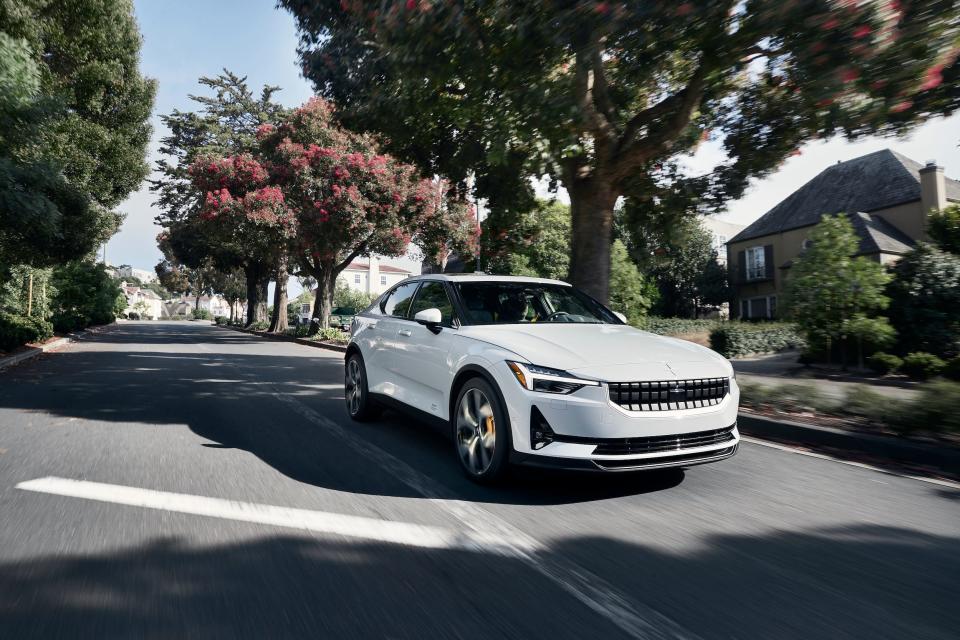
First impressions
The first thing you notice if you’re like me and used to driving a 10-year-old car (a 2012 Audi SUV) is what’s not here. There’s no traditional engine. Pop the hood and there’s a “frunk” or front trunk with ample space for a few full grocery bags. Also? No transmission, tailpipe, gear systems or gas tank (duh).
There’s no need to put a key in a lock or ignition either. As long as it’s in your pocket or purse, just grabbing the handle unlocks the door while tapping a finger to the handle locks it back up.
When it’s time to hit the road, the car starts up automatically. It’s so quiet that it’s hard to tell the difference between “on” and “off.” Overall, it feels like a car from the future – but a future where every car on the road is smarter and cleaner, if not cheaper.
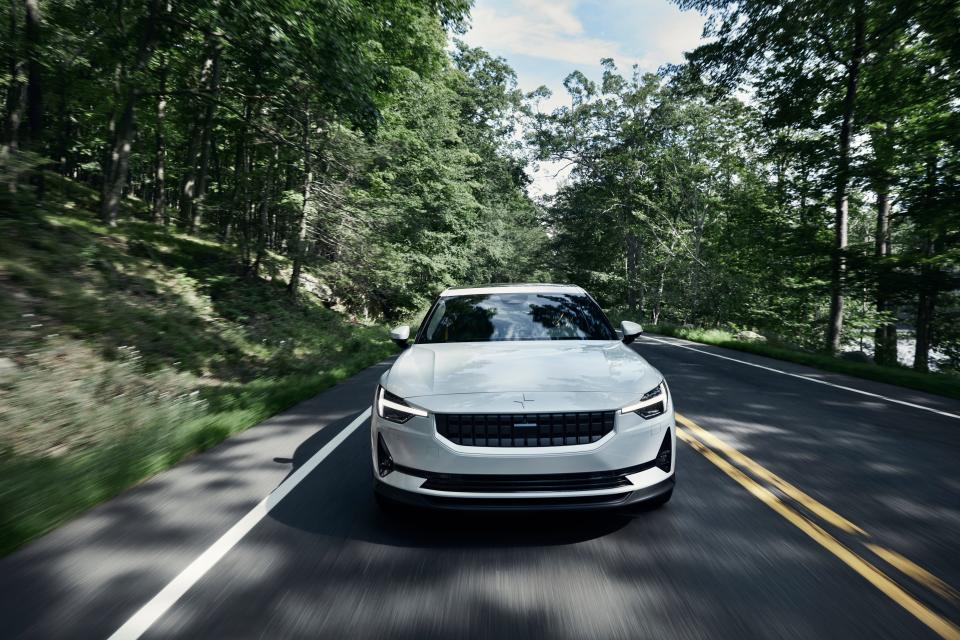
Price points
The base price for this model is just under $50,000 – but hold off on the sticker shock for a second. A $7,500 federal tax credit brings the cost closer to $42,500, plus you’ll likely qualify for other rebates, incentives and credits. Be sure to research what your state offers, too.
It’s also worth noting here that Polestar’s base price is less than the industry average EV of $56,437 according to Kelley Blue Book (KBB). That's not too bad, considering Polestar was the in-house performance division of Volvo, whose EVs will run you about 5,000 more. Still, the cost of EVs remains about $10,000 more upfront than their fuel-filled counterparts.
The EPA's calculations show the Polestar 2 will save roughly $9,750 in fuel costs over five years compared to the average new vehicle. There are other ways EVs could save you more money in the long term, which we’ll revisit in a minute.
Registration for EVs soar: Are they finally gaining mainstream acceptance?
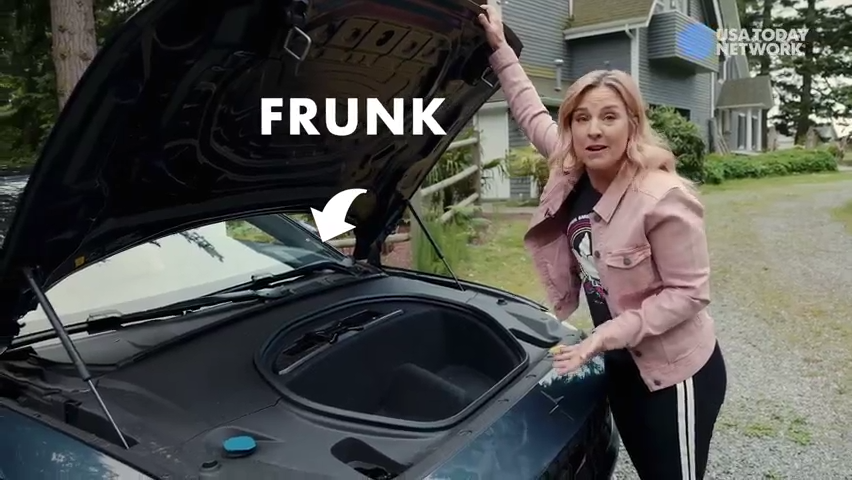
Swapping gas for volts
Okay, that's great, but what's it actually like to drive? Incredible. Especially compared to my older, not-very-smart-at-all auto. When you step on the accelerator (it’s so weird not to write “gas pedal”) from a standstill, a tiny bit of lag makes you wonder if you left the parking brake on. Then, it feels like a sailboat when it catches the wind and surges forward, gliding along the roadway.
The differences between electric power and the old gas-guzzling standard usually come down to the little things. Both will get you where you want to go, but one does it quicker, quieter and cleaner than the other.
All fully electric vehicles ditch internal combustion in favor of a beefy battery and electric motors to drive the wheels. This sounds like a straightforward trade, but it means that EVs are both heavier and quieter. The lack of tiny explosions under the hood means a whisper-quiet ride and the hefty batteries that hold power weigh the car down more than a full fuel tank.
Despite that, EVs are typically faster than their fuel-slurping counterparts. Gas engines build power over time, while electric motors are ready to go at the flick of a switch – or in this case, the press of the accelerator. In the dual-motor Polestar 2, you'll go from zero to a speeding ticket in just 4.5 seconds which feels a bit like shooting off in a rocket. If you watch the video at the top of this story, you’ll see my hair whooshing back when I floor it. It’s a total thrill.
'Extraordinarily frustrated': Renters can find no place to plug in electric vehicles
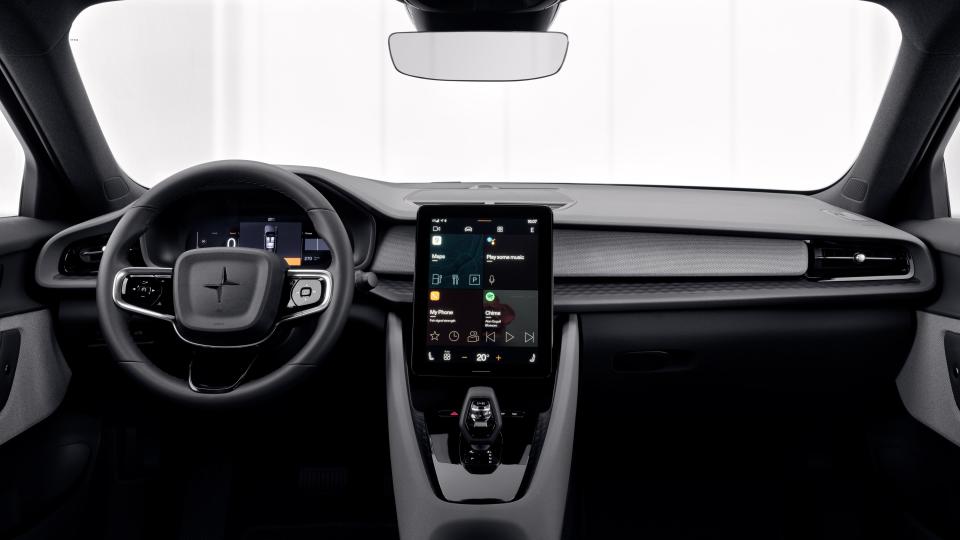
Creature comforts
One thing I've noticed about all the EVs I've tested over the years is that they ride smooth as silk. The heavy, planted rubber feet wear the road like a glove and fewer moving parts under the hood mean no vibrations or rumbles make it into the passenger cabin.
Inside, the vegan “leather” seats, gold seatbelts, upcycled materials (some of the interior is recycled from fishing nets), heated and cooled seats, voice-activated navigation and climate controls and ample touchscreen real estate match the Polestar 2's futuristic vibe. It’s also clear that the company is speeding toward a zero-emissions future.
Need to find a charging station for your EV? These apps can help
The main dashboard controls are on Polestar’s touchscreen panel, which is basically a built-in Android tablet loaded with the Google Infotainment system. That means you have Google Assistant, Maps and the Play Store built-in – and it works quickly when you ask a question like ‘Hey Google, where’s the nearest fast-charging station?’
That's a huge selling point for me, as I've grown tired of the closed ecosystems some other automakers offer. To this point, Polestar just tweeted that the 2 is one of the first cars getting the next generation of Apple CarPlay later this month and that it will be on board all Polestar cars in the future.
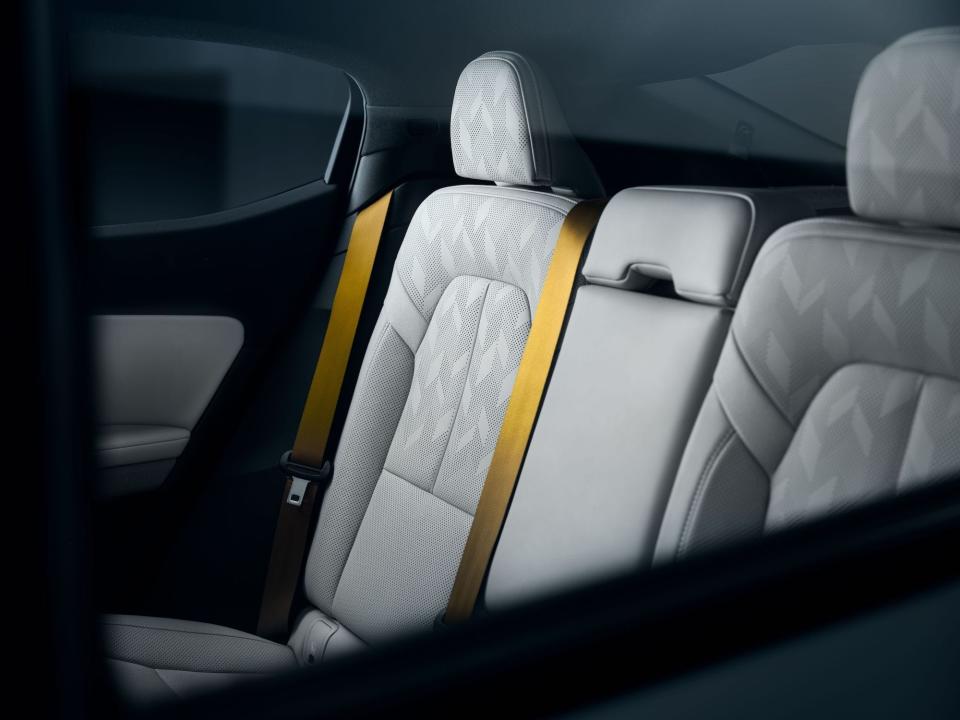
Are EVs really cheaper in the long run?
EVs aren't cheap. They're packed with high-end tech and you can't skimp on quality when it comes to massive batteries and electric motors. They can also be more expensive in terms of insurance premiums and repair costs for reasons that generally tie back to their newness and relative lack of scale.
But there’s no doubt you’ll get satisfaction from not spending so much at the pumps, especially with near $5-a-gallon gas prices forcing some people to choose between buying food or fuel.
We charged the Polestar 2 from zero to 100% capacity for $7.64 worth of electricity from a regular home outlet. Filling up my similar-sized gas guzzler sets me back $100 every time.
I'd spring for a dedicated at-home fast-charging port if I were to add an EV to my garage permanently. If your home already has a 240-volt circuit available – which you need for a clothes dryer – you can get about 75 miles of charge in an hour.

With a faster Level 3 charger found at ChargePoint (and many office buildings or public transit parking lots), that number jumps to about 180 miles in the same amount of time.
Otherwise, charging from zero to 100% with a regular wall outlet can take up to 40 hours. I almost fainted when I heard that number, then realized that as long as we plugged in whenever we weren’t driving it, it stayed topped off just fine.
Since I, like most other drivers in America, drive less than 50 miles per day on average, charging wasn’t the big issue I expected it to be. I would still be nervous about taking it on a long road trip, since public charging stations have yet to catch up with growing demand.
Final thoughts
The other ways you might save over time with EVs are on maintenance costs. No oil changes, no exhaust and this particular car comes with free, scheduled upkeep for the first three years of ownership or 30,000 miles, whichever comes first.
If I had the money, I would buy a Polestar 2 in a heartbeat. But for now, I"m going to stick with my my current car, which, while expensive to fuel up, is at least paid off. But in terms of overall cost savings and the environmental upside, it’s a no-brainer to go all EV when my current ride poops out for good.
If you're waiting for more extended range, faster charging and lower sticker prices before looking into an EV, you might already be missing the boat: An electric car's total cost of ownership already challenges that of the old gas-guzzler and may soon make an EV the only logical vehicle to buy.
Jennifer Jolly is an Emmy Award-winning consumer tech columnist. Email her at jj@techish.com. Follow her on Twitter: @JenniferJolly. The views and opinions expressed in this column are the author’s and do not necessarily reflect those of USA TODAY.
This article originally appeared on USA TODAY: Electric vehicles: The pros and cons – and costs of – owning an EV
